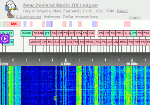A RADIO NIGHT.
Christchurch Press, Volume LXVIII, Issue 20663, 28 September 1932, Page 8
ADDRESS ON DISTANCE RECEPTION. The Canterbury Branch of the New Zealand D.X. Club held an informal evening yesterday in connexion with the “Come to Christchurch” Week effort. There was a large attendance of members and the public, testifying to the increasing popularity of long distance broadcast listening.
The chairman, Mr J. C Stapleton, outlined the club’s activities, and introduced the lecturer, Mr L. Hurrell. Mr Hurrell gave an interesting address on long distance listening. The phenomenal distance reception now enjoyed by listeners, he said, was due to the radio cycle, and to the marvellous development by radio engineers of the electric receiver with its tremendous sensitivity. Valve design had been responsible for the high sensitivity of the alternating current set and the high power of the modern radio broadcasters.
Aerial and earth systems played a great part in long distance reception. The best type of aerial was the all-lead-in type, the aerial going straight to the receiver from a 40 or 50 foot pole. For the hardened D.X. listener, aerial tuners were of great assistance. Every aerial had its natural wavelength, and these aerial tuners tuned the aerial into resonance before the signals entered the tuning stages of the receiver. He advised his hearers to experiment with aerials of different lengths in order to get a satisfactory signal-to-noise ratio. Earthing the end of the “L” type aerial modified electrical interferences. A good way of improving the usual pipe earth was by pouring blue-stone round the pipe. A less effective alternative was ordinary salt and water.
Copper Sulfate = (Bluestone) …. (Use cautiously as toxic)



